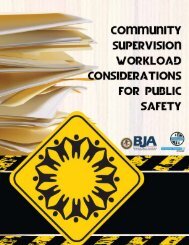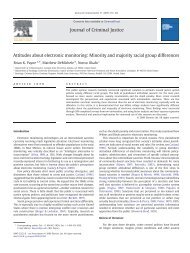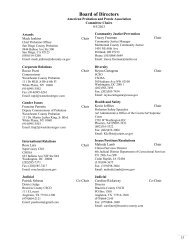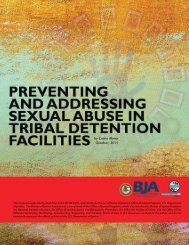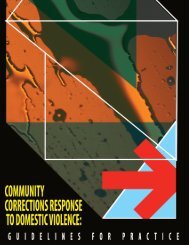Intervention Principles and Practice Guidelines for - Underage ...
Intervention Principles and Practice Guidelines for - Underage ...
Intervention Principles and Practice Guidelines for - Underage ...
Create successful ePaper yourself
Turn your PDF publications into a flip-book with our unique Google optimized e-Paper software.
<strong>Underage</strong> drinking is intertwined with the biological, psychological, <strong>and</strong> social factors at work<br />
during youth development. The use of alcohol <strong>and</strong> other drugs by individuals under 21 appears to<br />
have a greater effect on young people when compared with its effect on adults. Alcohol use among<br />
family members, peers, <strong>and</strong> neighbors also can influence young people to begin drinking at earlier<br />
ages. Inherited biological factors interact with environmental influences to determine physical growth<br />
<strong>and</strong> development of adolescents. Genetic makeup determines when gl<strong>and</strong>s <strong>and</strong> hormones trigger the<br />
Exhibit 1<br />
The Biopsychosocial Process<br />
of Adolescent Development<br />
Social Context<br />
Peers<br />
Environment<br />
Family<br />
Individual<br />
Income<br />
Racism<br />
Sexism<br />
Classism<br />
Ageism<br />
School<br />
Employment<br />
Opportunities<br />
Social<br />
Structures<br />
Health<br />
Care<br />
Values &<br />
Religion<br />
Family<br />
Accord or<br />
Conflict<br />
Genetics<br />
Biology<br />
Nutrition<br />
Housing<br />
Social<br />
Welfare<br />
Laws &<br />
Policies<br />
Neighborhood<br />
Economic Conditions<br />
100



